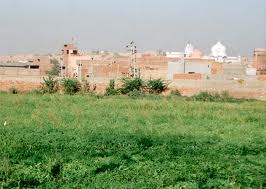The historical landscape of Haryana harbors nuanced architectural narratives often overlooked by mainstream historical accounts. Gujri Mahal in Hisar represents one such enigmatic structure that whispers tales of regional architectural evolution and cultural complexity. While specific details remain shrouded in historical ambiguity, the site emerges as a potential testament to the architectural transitions experienced in this region during medieval periods.
The architectural vocabulary of such sites in Haryana typically reflects a complex interplay of cultural influences, blending local building techniques with broader regional design philosophies. These structures often serve as silent witnesses to socio-political transformations, embodying layers of historical narrative that extend beyond mere physical construction. In the context of Hisar's urban landscape, Gujri Mahal potentially represents a microcosm of architectural adaptation and cultural synthesis.
Regional historical contexts suggest that structures like Gujri Mahal were not merely architectural entities but complex social spaces that facilitated interactions, negotiations, and cultural exchanges. The architectural grammar of such sites often incorporated design elements that reflected both functional requirements and symbolic representations of power, status, and community dynamics. These nuanced architectural choices provide insights into the sophisticated social architectures of pre-modern Haryanvi societies.
The broader historical context of Haryana reveals a region characterized by dynamic cultural interactions, where architectural developments were not isolated phenomena but part of intricate networks of political, economic, and social transformations. Sites like Gujri Mahal potentially emerged from these complex historical processes, embodying architectural responses to changing regional dynamics. Their significance lies not just in physical structures but in their capacity to narrate broader historical trajectories.
Archaeological and architectural investigations in Haryana consistently reveal the region's rich cultural palimpsest, where each architectural layer represents a unique historical moment. Structures like Gujri Mahal contribute to this complex narrative, offering glimpses into architectural strategies employed by local communities and ruling powers. These sites challenge simplistic historical narratives, emphasizing the sophisticated cultural negotiations that shaped regional architectural landscapes.
The cultural significance of such historical sites extends beyond physical preservation, representing living repositories of collective memory and regional identity. They serve as tangible connections between past and present, allowing contemporary observers to engage with historical narratives through architectural materiality. In the case of Gujri Mahal, its potential historical significance lies in its capacity to evoke broader regional historical experiences.
Understanding sites like Gujri Mahal requires a nuanced approach that moves beyond mere architectural documentation. It demands careful contextual analysis that considers broader historical, social, and cultural dynamics. Such an approach reveals these structures not as static monuments but as dynamic cultural texts that continue to evolve and communicate complex historical narratives.
The preservation and interpretation of historical sites like Gujri Mahal represent critical contemporary challenges. They require interdisciplinary approaches that combine archaeological expertise, historical research, architectural conservation, and community engagement. By adopting such holistic perspectives, these sites can be transformed from marginal historical curiosities into vibrant spaces of cultural understanding and historical reflection.



